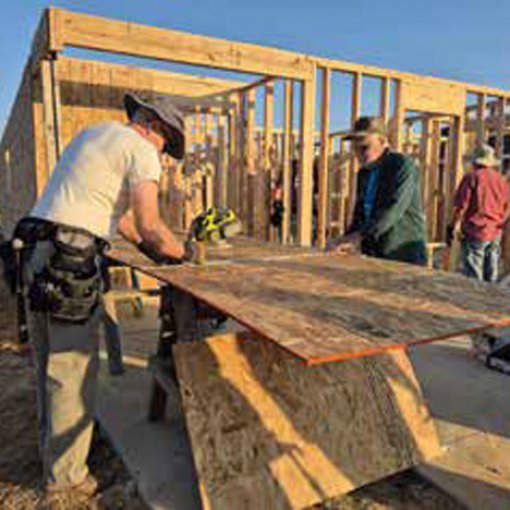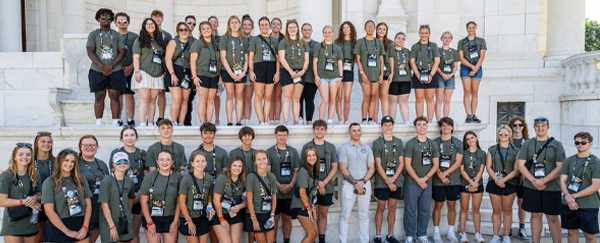
First Electric App
Easily pay
your bill
Download the app


For E4 Specialist Jaxon Hamby, standing watch at the Tomb of the Unknown Soldier is more than a duty — it’s a calling.
Hamby, a 2022 graduate of Beebe High School, serves as a Sentinel in Arlington National Cemetery. His path to the Army was shaped by family tradition. His father, both grandfathers and several uncles also served in the Army. Jaxon’s father, Mark, is an outside fiber plant technician for Connect2First.
“I am so proud of him,” Mark said. “He’s an infantryman in the U.S. Army. There’s only like one or two maybe three picked each time to be an Honor Guard, and he was one of them. He did it, and now, he’s a full-blown Sentinel.”
Speaking recently to high school students during the Electric Cooperatives of Arkansas’ Youth Tour, the 20-year-old soldier shared what inspired him to pursue one of the U.S. Army’s most prestigious and demanding roles.
“I was a casket bearer in the cemetery before this,” Hamby said. “I felt like I kind of mastered that too fast, and I wanted more of a challenge. This just seemed like the right place for me.”
Stationed with the 3rd U.S. Infantry Regiment in Fort Myer, Virginia, also known as “The Old Guard,” Hamby volunteered to be a Sentinel. Entry requires a grueling selection and training process that Hamby likens to drinking out of a fire hose.
“We memorize 17 pages of knowledge verbatim,” he said. “You’re only allowed two deficiencies across your uniform and guard change — and everything is measured down to a 64th of an inch.”
Hamby explained that the role demands as much mental strength as physical endurance. Sentinels work 26-hour shifts, performing repeated 21-step marches across the black mat at the tomb — a tribute to the 21-gun salute, the military’s highest honor.
A typical day begins at 5:30 a.m. with physical training, followed by hours of ceremonial duties, uniform maintenance and guard changes. Sentinels post every half hour in the summer heat and every hour in winter — regardless of weather.
“One of my first winters, I was posted for two hours in 8 degrees with snow and ice coming off the trees,” Hamby said. “It was terrible, but it was worth it.”
Even off the mat, duties don’t end. At night, guards switch to camouflage uniforms and take turns patrolling the plaza to ensure the tomb remains watched at all times.
Now, after completing nearly 600 walks, it’s become second nature. “I used to be nervous, shaking. Now, it’s muscle memory,” he said. “But it’s still a challenge. You don’t forget the weight of what you’re doing.”
Mark has visited Arlington National Cemetery to watch his son perform his duty. “It almost chokes me up talking about it. I’m so very proud of him. I can’t even believe it.”
To be considered for the voluntary role, soldiers must be on active duty and stationed at Fort Myer. Those selected train for roughly a year before earning the Sentinel badge — one of the most prestigious and rare honors in the U.S. military.
“It’s not for everybody,” Hamby said. “You’ve got to want to be here.”
The guard's origins trace back to 1925, when a civilian was first assigned to watch over the tomb. The military took over the duty the following year. Since July 2, 1937, the tomb has been protected continuously — 24 hours a day, 365 days a year.
“We’re always here,” Hamby said. “That’s the promise.”